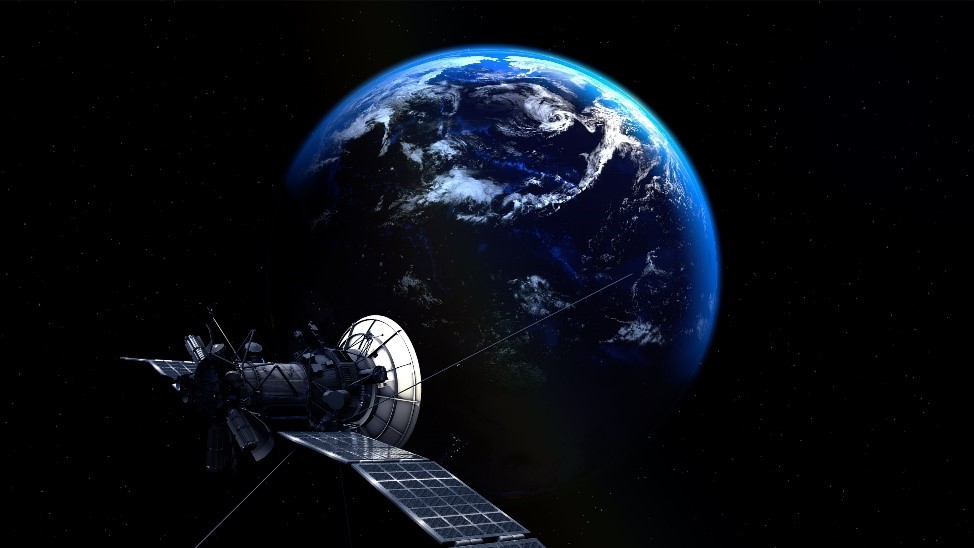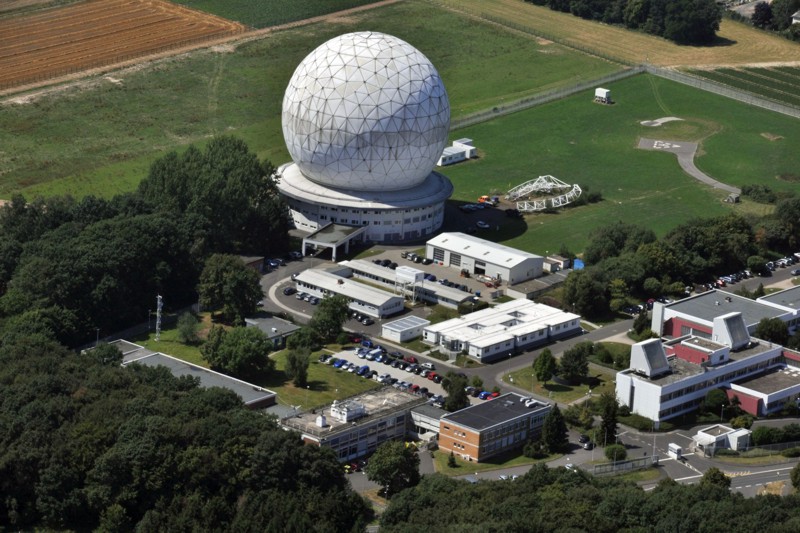AM-SPACE
The AM-SPACE (- Additive Manufacturing of Solar Panels for spACE applications) project addresses several challenges. Instead of heavy metal hinges, memory plastics are being developed that mechanically and electrically connect the individual solar elements.
Learn more
TIRA
The system primarily serves as an experimental carrier for the development and investigation of radar procedures for the detection and reconnaissance of objects in space.
Learn more
GESTRA - The near-Earth orbit always »in view«
A phased array radar with high beam agility is needed to monitor the near-Earth orbit and to know which objects are moving there. Fraunhofer FHR is therefore building the GESTRA semi-mobile space surveillance radar on behalf of the German Federal Ministry of Economics and Technology.
Learn more
Fraunhofer On-Board-Prozessor
The Fraunhofer On-Board Processor (FOBP) is a powerful and flexibly programmable communication payload for digital signal processing on board satellites. The FOBP consists of the latest generation of radiation-hard and therefore space-qualified FPGAs (Field Programmable Gate Arrays).
Learn more
Galileo for European Union Defence (GEODE)
Galileo is the world's first satellite navigation system (GNSS) under civilian control and offers, among other things, encrypted satellite signals, the so-called Galileo Public Regulated Service (PRS). The Galileo PRS signals are specially protected and cannot be interfered with or manipulated.
Learn more
GNSS interference detection with machine learning and crowdsourcing (DARCY)
Global Navigation Satellite Systems (GNSS) are used for robust and accurate positioning and timing information and have become a fundamental part of our critical infrastructure (KRITIS). The jamming and deception of these signals can have serious consequences, such as the failure of the power grid or the mobile phone network.
Learn more
Pump laser for space & satellite applications | European Data Relay Satellite System (EDRS)
Our pump modules are used, among other things, in systems for optical free-space data transmission systems. In the EDRS mission, near-earth observation satellites communicate with ground stations and use geostationary satellites to transmit large amounts of data in real time.
Learn more
PhLEXSAT
Photonic technologies are key to meeting the requirements of future terabit/s communication satellites. PhLEXSAT will raise the maturity level of several key photonic devices and modules to TRL5 through design, manufacturing and testing.
Learn more
ROAA – Antenna array for atmospheric measurement
As part of the ESA (European Space Agency) project »ROAA« (Radio Occultation Antenna Array), Fraunhofer IIS has developed an antenna array to precisely measure the Earth's atmosphere from space. Radio signals are used to determine atmospheric conditions such as pressure, temperature and humidity.
Learn more
Galileo Public Regulated Service (PRS)
PRS offers officially authorized users the possibility to securely determine time and place with its specially protected and encrypted satellite navigation signals (GNSS).
Learn more
Clear road for special-purpose vehicles with Galileo PRS (HALI)
As part of the "HALI" (HälytysAjoneuvojen LIikennevaloetuudet, Finnish for traffic light priority for emergency vehicles) project, we are developing a system that will ensure that emergency vehicles can drive freely on the roads in an emergency by networking traffic lights and determining their position safely. The secure positioning required for this is ensured by Galileo PRS.
Learn more
Optical SatCom
Optical communication systems are confronted with the constant need for higher data rates. Together with the industrial partners SpaceTech GmbH and Tesat-Spacecom GmbH & Co. KG, FBH is participating in an ESA-funded activity to investigate the suitability of diode laser types for WDM in coherent optical communication terminals at 1064 nm.
Learn more


 Fraunhofer Group for Microelectronics in cooperation with the Leibniz institutes IHP and FBH
Fraunhofer Group for Microelectronics in cooperation with the Leibniz institutes IHP and FBH